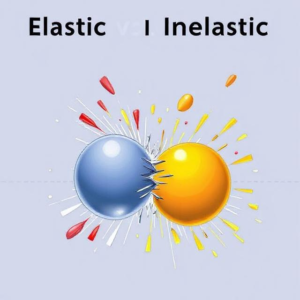What is the Raman Effect?
The Raman Effect is a phenomenon in physics that occurs when light passes through a material and gets scattered. Most of the time, the scattered light has the same energy (or color) as the incoming light. However, in some cases, the scattered light has a different energy, either higher or lower. This change in energy happens because the light interacts with the molecules in the material.

- Discovered by: Indian scientist C.V. Raman in 1928.
- Why it happens: When light hits a molecule, it can excite the molecule, making it vibrate. After the collision, the scattered light can either lose energy (lower frequency) or gain energy (higher frequency) depending on how the molecule absorbs or releases energy.
Key Points:
- Incident Light: Light (usually from a laser) that hits the material.
- Scattered Light: Light that comes out after interacting with the material.
- Energy Shift: The Raman Effect refers to the shift in the frequency (or color) of the scattered light compared to the incident light.
- Raman Shift: This refers to the difference in energy between the incident light and scattered light.
- If the scattered light has lower energy than the incident light, it’s called Stokes scattering.
- If the scattered light has higher energy, it’s called Anti-Stokes scattering.
Why is the Raman Effect important?
It gives scientists a way to study materials without damaging them. By analyzing the change in the frequency of light (the Raman shift), we can learn about the molecular composition, structure, and properties of the material.
Applications of the Raman Effect
The Raman Effect has many practical applications, especially in fields like chemistry, biology, material science, and medicine. Here are some of the major uses:
1. Raman Spectroscopy
What it is: A technique that uses the Raman Effect to gather information about the vibrational modes of molecules.
- How it works: A sample is illuminated with a monochromatic light source (like a laser). The scattered light is analyzed to produce a spectrum that gives information about the chemical composition and structure of the material.
- Applications:
- Chemical Analysis: Identifying the chemical composition of substances.
- Material Characterization: Determining properties of materials like polymers, crystals, and nanomaterials.
- Forensics: Identifying substances at crime scenes (e.g., detecting drugs, explosives).
2. Biological and Medical Applications
- Cellular and Tissue Analysis: Raman spectroscopy can help study biological tissues and cells, aiding in the detection of diseases like cancer.
- Cancer Detection: Raman spectroscopy can identify subtle changes in the molecular structure of tissues, helping detect cancer cells at an early stage.
- Non-invasive Diagnosis: Unlike traditional methods, Raman spectroscopy does not require taking tissue samples, making it a valuable tool for non-invasive diagnostics.
3. Environmental Monitoring
- Pollution Detection: Raman spectroscopy can be used to detect pollutants in the air, water, and soil. For example, it can detect specific contaminants in the environment, such as oil spills or toxic gases.
- Atmospheric Studies: By analyzing the Raman scattering of light in the atmosphere, scientists can study the composition and properties of atmospheric particles.
4. Material Science and Nanotechnology
- Nanomaterials: Raman spectroscopy is widely used to study nanomaterials (like graphene and carbon nanotubes). It helps scientists understand their structure, defects, and other properties.
- Semiconductor Industry: In the production of semiconductors, Raman spectroscopy is used to study the materials’ crystal structures and stress states.
5. Pharmaceuticals
- Drug Development: Raman spectroscopy can be used to study the molecular composition of drugs, ensuring the purity and consistency of pharmaceutical products.
- Quality Control: In the pharmaceutical industry, Raman spectroscopy helps to identify the ingredients in tablets and pills, ensuring proper dosage and quality.
6. Art and Archaeology
- Artwork Analysis: Raman spectroscopy helps identify pigments used in paintings and artifacts. This can be important for conservation or authentication of artwork.
- Cultural Heritage: It can also be used to study ancient materials, revealing the composition of historic artifacts or building materials.
Advantages of Raman Spectroscopy
- Non-destructive: Raman spectroscopy doesn’t destroy the sample, making it ideal for studying precious or rare materials.
- Minimal Sample Preparation: Unlike other techniques like X-ray diffraction, Raman spectroscopy requires little to no sample preparation.
- Works in Aqueous Solutions: Unlike other techniques that are affected by water, Raman can analyze materials in liquid form, such as biological samples or environmental solutions.
- Portable: Raman spectrometers can be made small and portable, allowing for on-site testing (e.g., in the field or at a crime scene).
Conclusion
The Raman Effect is a powerful tool that helps us understand the molecular and chemical properties of materials. By analyzing how light interacts with molecules, scientists can identify substances, detect diseases, monitor environmental pollution, and even study ancient artifacts. Its versatility across many scientific and industrial fields makes it one of the most valuable tools in modern research and development.











